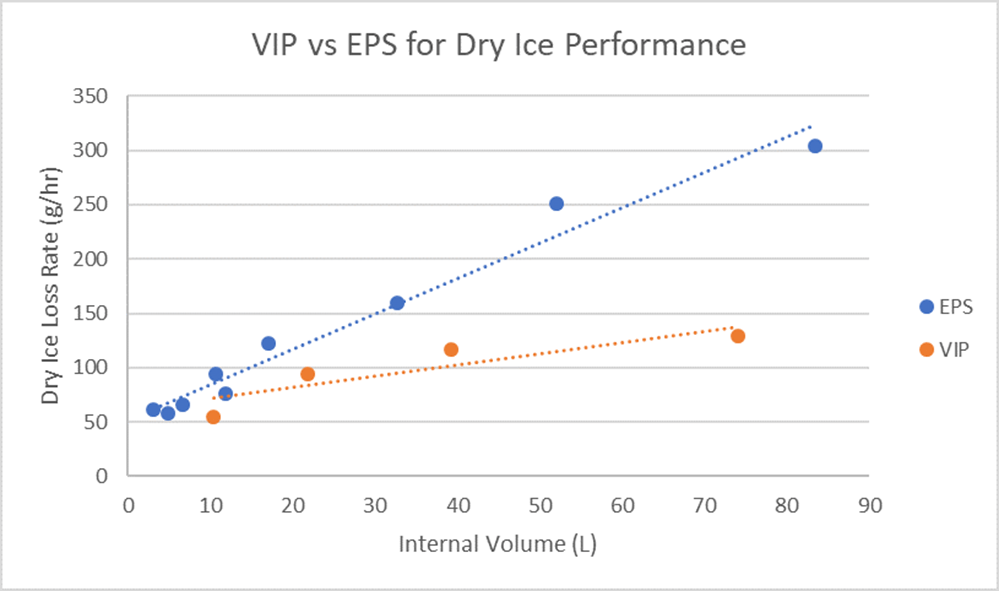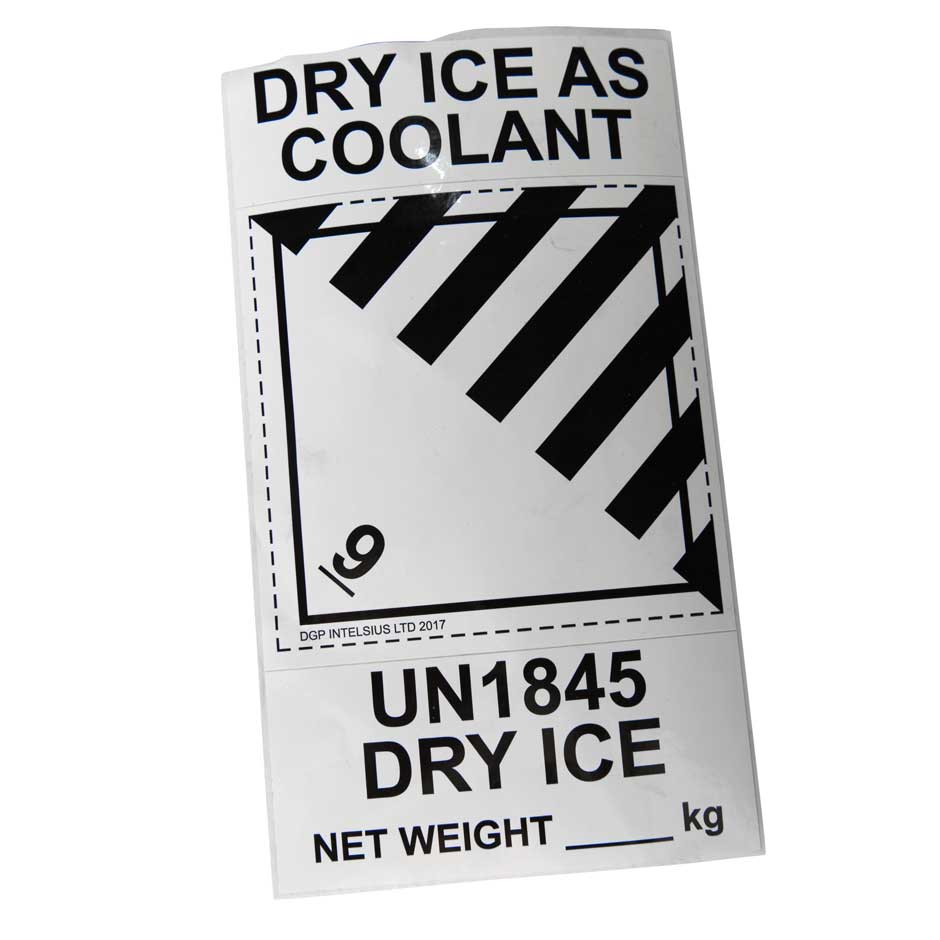Dry ice is a super cooling agent that is the solid or frozen form of the gas carbon dioxide (CO2). It has various uses in industries like food manufacturing, automotive and aerospace, medical and biopharmaceutical and healthcare industries. Dry ice has a surface temperature of -78.5 °C and it sublimates, which means it breaks down from a solid directly into a vapour or carbon dioxide gas. This sublimation feature makes dry ice perfect for not only keeping biologics like vaccines at a frozen temperature during shipping but also means that the ice will not melt into water, which could damage the packaging and the payload within.
In this article, we will explain the key considerations when shipping a payload with dry ice.
Key Considerations
The surface temperature of dry ice is extremely low, making it ideal for keeping goods cold for an extended period even when exposed to external temperature changes. As a rule of thumb, the rate of sublimation of dry ice is about five to ten pounds every 24 hours. This rate however will vary significantly depending on a few key factors which we will highlight below.
- Temperature of payload
Dry ice should be used for payloads that need to be kept between -20°C and -80°C. Some biologics like vaccines and other high-value temperature sensitive goods need to be kept at very low temperatures to maintain their integrity and efficacy. Being sure of your payload’s requirements in this regard is essential.
- Type of insulation
Using either expanded polystyrene (EPS) or vacuum insulated panelling (VIP) within your packaging is the most suitable these materials are good for slowing down the rate of loss of the dry ice (i.e sublimation), particularly over long shipment distances. Materials like plastic should not be used to ship with dry ice, as it cannot withstand its low temperatures. Selecting the type of insulation is also dependent on factors like cost and the type of payload being shipped.
If you require a higher performance system that uses less dry ice, then a VIP-based system would be more suitable, as the rate of loss of dry ice throughout the shipment’s journey would be less than an EPS-based system because it provides better insulation.
The graph above depicts the performance of dry ice in an EPS and a VIP insulation system respectively. A VIP-based system provides you with better insulation over extended periods, which means you would not need as much dry ice to protect the payload. While the rate of loss of dry ice is slower in a VIP system than an EPS system, both systems have their respective benefits. An EPS-based dry shipper would require more dry ice, but it is lighter and thus more advantageous for freight and transport costs.
- Shipping Duration
Another important factor when shipping with dry ice is the duration of the journey the payload will be on. The longer the duration, the more dry ice needed to ensure that goods stay at frozen temperatures, or you may require a higher performance system which maintains the temperature of the payload without needing as much dry ice.
- Size and weight of payload
The size of payload will determine the size of packaging needed and the amount of dry ice needed to keep the payload at the required temperature. Weightage of the packaging and payload will also affect freight costs. For example, and EPS dry ice shipper is usually lighter than a VIP system, which would keep freight costs to a minimum.
To illustrate, we have created a table below comparing the weightage of one of our dry ice solutions, BioTherm 10 which uses EPS, and an ORCA Single Use which utilizes VIP technology.
| System/Criteria | ORCA Single Use (4 L) | BioTherm 10 |
|---|---|---|
| Insulation | VIP | EPS |
| Dry ice pellets | 7kg | 7kg |
| Mass/System weight | 3.4kg | 1.1kg |
| Duration of performance | 126 hours | 74 hours |
| Dry ice loss rate (grams per hour) | 55.2 g/hr | 94.6 g/hr |
| Internal payload volume | 10.4 L | 10.6L |
While the internal payload volume for each system is almost equal, the ORCA system’s overall weight is heavier than the BioTherm. This would affect shipping rates, however it would depend on the size of packaging system used, as well as the weight of the payload within. Shipping rates tend to fluctuate based on demand and world events, however a quick search online would be able to give you a gauge of how much shipping rates may cost for each weight class selected.
Labelling
Dry ice is considered a hazardous material and must be packaged and labelled according to international guidelines issued by the UN and International Air Transport Authority (IATA). When shipping goods with dry ice, a Class 9 label as well as a UN 1845 label must be applied to the front of the box. You must also indicate the weight of dry ice used within the packaging. If you are still unsure of the labelling guidelines, we have created a helpful labelling guide for your reference.
Dry ice labelling
Intelsius Solutions
We carry a range of dry ice packaging solutions that can meet a wide range of payload requirements. Our ORCA range features multi-use and single use options in a range of sizes, qualified for a minimum of 120+ hours with dry ice. Our EPS-based PharmaTherm dry shipper range uses light but high-density EPS to maximise protection without incurring extra freight costs.
All of our dry ice solutions are compatible with a range of data loggers so you can track and trace your payload at any point throughout its shipment journey. For more information on our dry ice solutions, click here.
Besides our purchase and rental options above, we also offer dry ice fulfilment services. If you are unable to find the right solution within our current range of products, we are able to create customised solutions, catered to your payload’s specific requirements.
Get in Touch
To find out more about our range of dry ice packaging solutions or if you’d like to create a customised packaging solution with us, reach out to cs@intelsius.com and our customer service representatives will be happy to provide assistance.
External Sources

